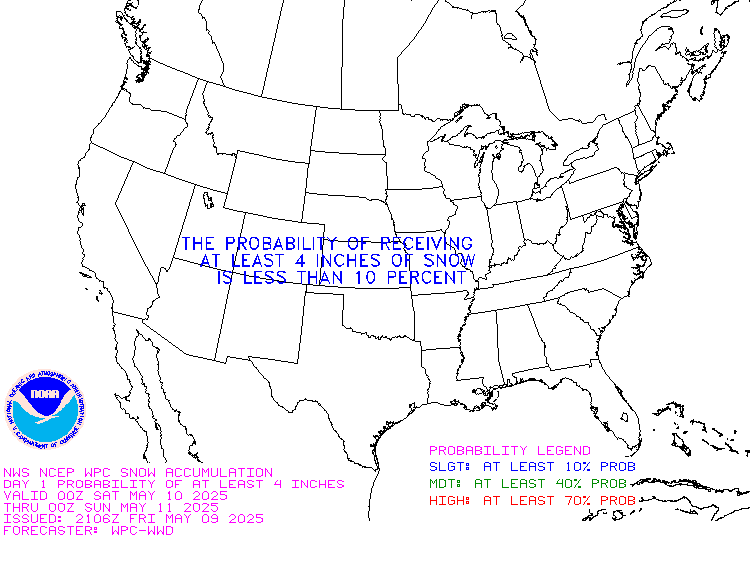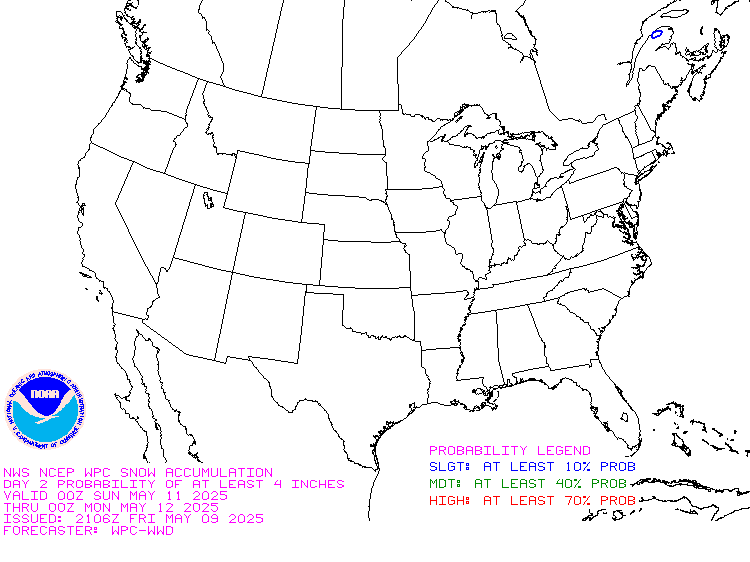This article focuses on what we are paying attention to in the next 48 to 72 hours. The article also includes weather maps for longer-term U.S. outlooks and a six-day World weather outlook which can be very useful for travelers.
First the highlights from the NWS.
Short Range Forecast Discussion
NWS Weather Prediction Center College Park MD
Thu Jan 11 2024
Valid 12Z Thu Jan 11 2024 – 12Z Sat Jan 13 2024…Strong low pressure system develops over the Southern Plains and brings
widespread rain, snow, and wind for the eastern half of the nation……Dangerously cold temperatures for the northern Rockies and Plains
through this weekend…
Please click on “Read More” below to access the full report issued today.
| Notices: The article on the Updated Outlook for January 2924 can be accessed HERE. What would you like to learn about? Please provide that to me via the comment section at the end of the article. |
Now more detail on the 48-Hour Forecast (It is a 48 to 72 Hour Forecast actually)
Daily weather maps. The Day 1 map updates twice a day and the Day 2 and 3 maps update only once a day. These maps update automatically. But if that does not happen, you can get updates by clicking HERE
TODAY (or late in the day the evening/overnight map will appear) (Key to surface fronts shown on maps and you will then also be able to insert a city name or zip code and get a local NWS forecast).
TOMORROW
NEXT DAY
This animation shows how things may play out over the next 60 hours. To update click here.
The NWS Climate Prediction Center’s: Watches, Warnings, and Advisories plus other information can be found HERE. We post at least one of those updates daily, sometimes both. The Highlights are shown in the lede paragraph of this article.
ATMOSPHERIC RIVERS
This tells us what is approaching the West Coast. Click HERE to update If I have not gotten around to doing the update. Here is some useful information about Atmospheric Rivers.
Continuation of the NWS Short Range Forecast. It is updated by NWS twice a day and these updates can be found here
The overall weather pattern will continue to be extremely active across
the continental U.S. through the end of the week and into Saturday
morning. An amplifying upper level trough over the Southwest U.S. early
on Thursday will then eject over the southern Plains and induce rapid
surface cyclogenesis, leading to another high impact storm system that
will once again hammer much of the eastern half of the country, with a
similar track to the event earlier this week.The surface low will quickly deepen from Arkansas to Michigan, dropping to
near 975 mb by Saturday morning. There will be a tight pressure gradient
around this low, particularly to the northwest where a major winter storm
with blizzard conditions is expected from eastern Nebraska to central
Michigan with widespread 6-12 inch snowfall totals within this corridor of
the Midwest, with potentially over a foot of snow across northern Lower
Michigan.Another round of severe weather is also appearing more likely across the
Deep South and into the Southeast U.S. through late Friday evening in the
warm sector of the low, where favorable parameters of kinematics and
instability will exist. This also includes the threat of tornadoes along
with the main threat of damaging wind gusts. In terms of heavy rainfall
potential, it appears the overall rainfall from this event will be
generally less than what occurred earlier this week for most areas across
the East Coast owing to the faster progression of the moisture plume and
lighter rainfall rates. However, there may be some areas of 1-2 inch
rainfall totals across portions of the northern Mid-Atlantic and into the
Northeast that could cause some instances of flooding across already
saturated grounds.A much colder arctic airmass will continue settling south and east in the
wake of this storm across the Plains, Midwest, and into the Ohio Valley.
Temperatures will be brutal compared to the relatively mild conditions
that have been experienced for much of the winter season up to this point
in time. Afternoon high temperatures will likely fail to reach zero
degrees across much of Montana and into North Dakota on Friday, and highs
only in the 0s and 10s across the Central Plains and into Iowa and
Minnesota. This arctic airmass will be lengthy in duration and persist
well beyond the end of the week.Unsettled weather conditions are also expected for much of the
Intermountain West and the Rockies with multiple rounds of snow expected,
and the heaviest precipitation is expected for the Oregon and northwestern
California coasts, and the Oregon Cascades, where a few feet of snow is
likely through early Saturday as another storm system works its way
inland.
Learn about wave patterns HERE.
Below is the current five-day cumulative forecast of precipitation (Updates can be found HERE)
Ski SnowReports
New Feature – Ski Reports. It is difficult to find reports that auto-update on-screen (and they are very long) but these links will get you to them – If you have additional suggestions make them in the comments section after every Econcurrents Article and we may add those links. We will try to not have too much overlap as that can add to the confusion.
Snow Forecasts. And remember this shows natural snow. Ski resorts also make their own snow.
Day 1

Day 2

Additional snow information can be found here and here. The second link provides animations.
Now we look at Intermediate-Term “Outlook” maps for three time periods. Days 6 – 10, Days 8 – 14, and Weeks 3 and 4. An outlook differs from a forecast based on how NOAA uses these terms in that an “outlook” presents information as deviation from normal and the likelihood of these deviations.
Below are the links to obtain updates and additional information. They are particularly useful if you happen to be reading this article significantly later than when it was published. I always try to provide readers with the source of the information in my articles.
| Days 6 – 10 (shown in Row 1) | Days 8 – 14 (Shown in Row 2) | Weeks 3 and 4 (Shown in Row 3 but updates only on Fridays) |
| https://www.cpc.ncep.noaa. gov/products/predictions/610day/ | https://www.cpc.ncep .noaa.gov/products/predictions/814day/ | https://www.cpc.ncep.noaa.gov/products/predictions/WK34/ |
Showing the actual maps. They should now update automatically. The Week 3 – 4 Outlook only updates on Fridays. So below is what I call the Intermediate-term outlook. On Fridays, it extends out 28 Days. That declines day by day so on Thursday it only looks out 22 days until the next day when the Week 3 – 4 Outlook is updated and this extends the outlook by one additional week.
| 6–
10
|
|
|
| 8–
14 |
|
|
| 3–
4 |
|
|
HAZARDS OUTLOOKS
Click here for the latest complete Day 3 -7 Hazards forecast which updates only on weekdays. Once a week probably Monday or Tuesday I will update the images. I provided the link for readers to get daily updates on weekdays. Use your own judgment to decide if you need to update these images. I update almost all the images Friday Night for the weekend edition of this Weather Report. So normally readers do not need to update these images but if the weather is changing quickly you may want to.
Temperature month to date can be found at https://hprcc.unl.edu/products/maps/acis/MonthTDeptUS.png
Precipitation month to date can be found at https://hprcc.unl.edu/products/maps/acis /MonthPNormUS.png
World Forecast
Below are the Day 1 -3 and 4-6 forecasts for temperature and precipitation. Updates and much additional information can be obtained HERE
World Temperature Anomalies
World Accumulated Precipitation
This information is provided by the University of Maine. They draw upon many different sources. There is a lot of information available at the link provided. I have just provided two useful forecasts. There are probably over a hundred different forecasts available from this source.
Worldwide Tropical Forecast (This is a NOAA Product)
This graphic updates on Tuesdays) If it has not been updated, you can get the update by clicking here Readers will only have to do that if they are reading this article much later than the date of it being published.
Information on Tropical Storms can be found HERE. Western Pacific information can be found HERE.
–
| I hope you found this article interesting and useful. |
–
